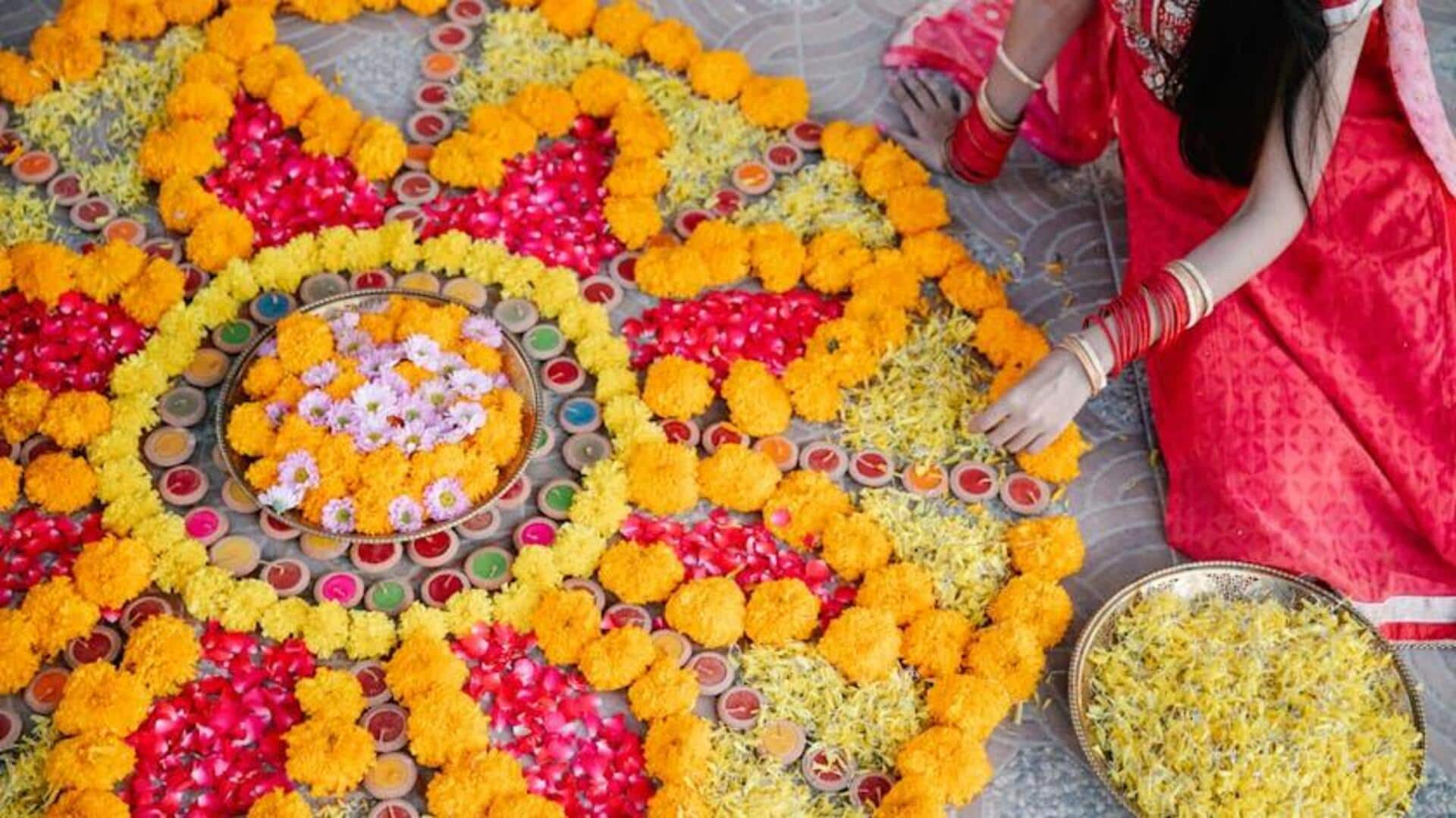
5 facts about the rangoli art
What's the story
Rangoli is a traditional Indian art where beautiful patterns are created on the ground using colored powders, rice, and flower petals. The art form is an integral part of Indian festivals and celebrations, depicting stories or messages. It showcases India's rich heritage with beautifully intricate designs that carry cultural importance.
Historical roots
Ancient origins of rangoli
Rangoli is an ancient Indian art that has been practiced for thousands of years. It is thought to have originated as a method to invite deities into homes during rituals. The designs were once basic geometric patterns but gradually transformed into intricate designs. This progression signifies the various cultural influences that have defined Indian civilization over centuries.
Cultural significance
Symbolism in designs
Each rangoli design also carries symbolic meanings that differ from region to region in India. Lotus flowers, peacocks, and geometric patterns are common motifs. Each symbolizes prosperity, beauty, and harmony, respectively. These symbols are usually selected according to the occasion or festival being celebrated. They add further layers of meaning to the artwork beyond its aesthetic appeal.
Artistic mediums
Materials used in creation
Traditionally, rangoli artists use natural materials like rice flour, turmeric powder, and flower petals to prepare their designs. These materials are selected for their vibrant colors and availability during festivals. In modern times, synthetic colors have also gained popularity because of how easy they are to use and the variety of shades they come in.
Diverse styles
Regional variations across India
Rangoli styles differ greatly from region to region in India, owing to cultural diversity. While Kolam designs are popular in Tamil Nadu, Alpana is preferred in West Bengal. Every style has its own unique characteristics shaped by local traditions and customs, which adds to the rich tapestry of Indian art forms.
Festive traditions
Role in festivals and celebrations
Rangoli is an integral part of festivals such as Diwali and Pongal in India, where it serves as a decor at doorsteps or courtyards. It invites guests with warmth and positivity into homes or community spaces alike, adding to the festive cheer. Through colors, it signifies happy times celebrated across the country every year, without fail. Year after year, it keeps tradition alive, vibrantly, always!